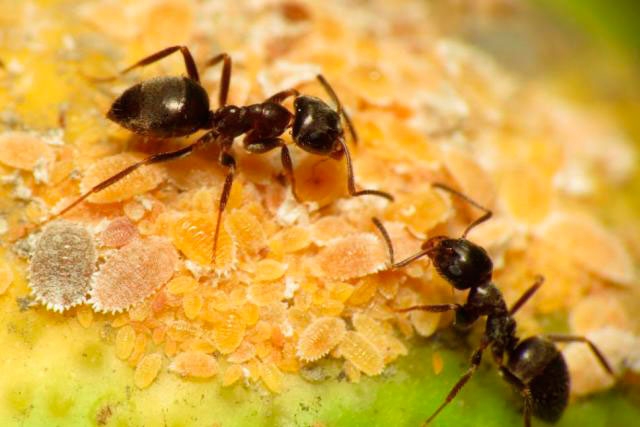New research to harvest pheromones from plants
(cont from last issue)
In the new work, the pheromone will first be harvested from the plant and put in traps or dispensers to prevent pests mating. But in the future, plants producing the pheromones could be planted alongside the crops they protect.
This will prevent females finding mates and laying their eggs on crops, which the larvae then destroy, but will not affect the insects away from the field.
Patron and her colleagues are also isolating pheromones from citrus mealybugs, chosen because they are particularly complex molecules. “If we can do these, we can probably do most things,” said Patron.
She said crop plants were not themselves being engineered to produce pheromones, so no GM material would be in the final produce.
Pheromones harvested from the plants could be used in fields quite soon, but putting pheromone-producing plants in fields is 10–15 years away, Patron said, because of the long regulatory process for GM plants.
Urgent need for solution
Other scientists, at the Technical University of Denmark (DTU), are exploring using engineered yeast cells to produce pheromones.
“We aim to produce pheromones by fermentation and it will make the pheromones affordable for the protection of row crops, like maize and soybean,” said Irina Borodina at DTU.
One of the pests her group is targeting is the fall armyworm, which poses a major threat to food security in Africa and elsewhere.
“African farmers have tried to treat this pest with insecticides, but it has become resistant,” said Borodina.
“So, there is an urgent need for a solution because otherwise people will starve.”
Different approaches are welcomed by Patron, whose group is also exploring the potential of fungi to produce pheromones.
“At this stage of biomanufacturing, there is not one perfect solution and it definitely makes sense we try it across different types of organisms and see what is going to work.”
Chris Hartfield, at the National Farmers’ Union in England, said: “Looking for alternative ways of effectively controlling the many crop pests farmers face is at the heart of the integrated pest management approach taken by farmers and growers.
“Using pheromones and other biopesticides, where available, is an important part of that approach.
“Farmers are in the job of producing safe, traceable and affordable food, so the critical thing for them is to have an effective crop protection toolbox available to combat pests today.
“If they lose a pesticide from that toolbox, food production could be severely affected if the effective alternative is several years away, at the end of a research project.”
See this article in Tree Fruit Jan 2019




















